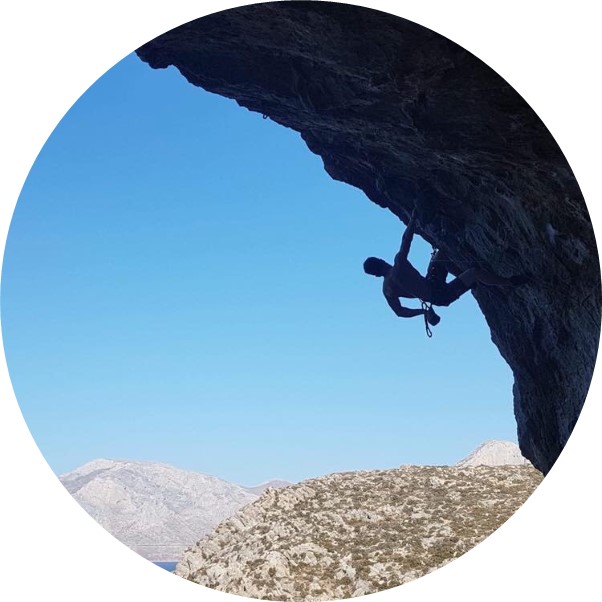Motivation – What Is It and How To Use It
In this blog post we will explore what motivation is, why it is important, what are the types of motivation and how it relates to you and your performance.
Motivation is an integral part of developing the direction of your training. By understanding your motivation you will be able to write an effective training that provides purpose and consistency to your climbing.
So, what is motivation?
Simply put, motivation is the direction and intensity of effort. This is quite a broad and vague definition for a complex topic. So let’s look a little deeper into what the components of motivation – direction of effort and intensity of effort – involve. A good place to start will be defining what effort means.
Effort can be defined as the investment of resources to enable the execution of a behaviour. As such, the Direction of effort refers to whether an individual seeks outs, approaches, or is attracted to a certain situation. Whilst, the intensity of effort refers to how much effort a person puts forth in a particular situation.
Now, we know what motivation is, but why is it important? To explain why it is important we should look at Brehm’s Motivational Intensity Theory. This theory is based on two constructs:
- Potential Motivation – The maximum amount of effort a person is willing to exert to satisfy a motive.
- Motivation Intensity – The amount of effort actually invested into the task.
Motivational Intensity Theory assumes that individuals will engage with a task as long as; a) the level of potential motivation is not reached; or b) the task is viewed as possible. If either of these are met then the individual will disengage from the task. Therefore, if our potential motivation is low or we do not view a task as possible we will not complete the task.
The major limitation of motivational intensity theory is that it does not consider the quality of motivation. By focusing on the quality of our motivation we will raise our potential motivation and allow for more effort to be invested into a task. To improve the quality we need to look at intrinsic and extrinsic motivation.
Intrinsic vs Extrinsic Motivation
Intrinsic motivation is the drive to be competent and self-determine in the journey to master a task. Extrinsic is when the drive comes from external rewards and other people through either positive or negative reinforcement. Amotivation is when an individual is neither intrinsically or extrinsically motivated and experience pervasive feelings of incompetence and a lack of control.
In addition, there are different types of intrinsic and extrinsic motivation. Types of intrinsic motivation include:
- Knowledge – engagement in the task is for the pleasure and satisfaction of learning, exploring or trying to understand a new skill.
- Accomplishment – Engagement in the task is for the pleasure and satisfaction of creating something or mastering a complex skill.
- Stimulation – Engagement in the task is to experience pleasant sensations.
Types of extrinsic motivation include:
- Integrated regulation – the drive comes from the value of the outcome rather than the interest in the task itself.
- Identified regulation – the drive comes from the behaviour being viewed as highly valued, accepted and judged. This is completed willingly even if the task is unpleasant.
- Introjected regulation – the drive comes from internal prods and pressures; however, the behaviour is not considered self-determined because it is regulated by external stimulus.
- External regulation – the drive is controlled by external rewards and constraints.
The quality of motivation can be viewed on a spectrum of self-determination. AKA each person’s ability to make choices and manage their own life. Intrinsic sits on one end of the spectrum (high self-determination) and amotivation sits on the other end of the spectrum (low self-determination). In the middle lies extrinsic as shown in the figure below.

Is one type of motivation better than another?
Due to the higher levels of self-determination, intrinsic motivation is viewed as a higher quality of motivation over extrinsic and leads to higher levels of potential motivation. It is important to recognise and understand your own motivation for climbing. Manipulating the environment and your goals to meet this will have the most significant effect on your performance.
So, why do you climb?
It is important to understand your purpose for climbing. It creates meaning for your training and helps you to realise that even though training or climbing might be tough now, the work you are completing is worth it and will help you in the process of achieving your bigger goals in the future.
So, how do you find your purpose? A good place to start is with a question. These are some to get you started:
- Why did I start climbing?
- What do I want to get out of my climbing?
- When am I having the most fun whilst climbing?
Once you have your answers, ask yourself why each of these answers is important to you. And repeat the process of asking why it is important to you 2-3 more times.
From this exercise you should have a short list of reasons why climbing is important to you. Take your list and compare it to the types of intrinsic and extrinsic motivation. Where do you lie on the spectrum? Are you driven by the satisfaction of learning new skills (Knowledge driven), or the value of completing a route/ problem (Integrated regulation)? Then next time you are struggling with training or climbing, you can remind yourself of you core motivations for climbing.
Want to put your new found motivation to work? Sign up for our Performance Coaching Plan to work 1-on-1 with one of our coaches.






